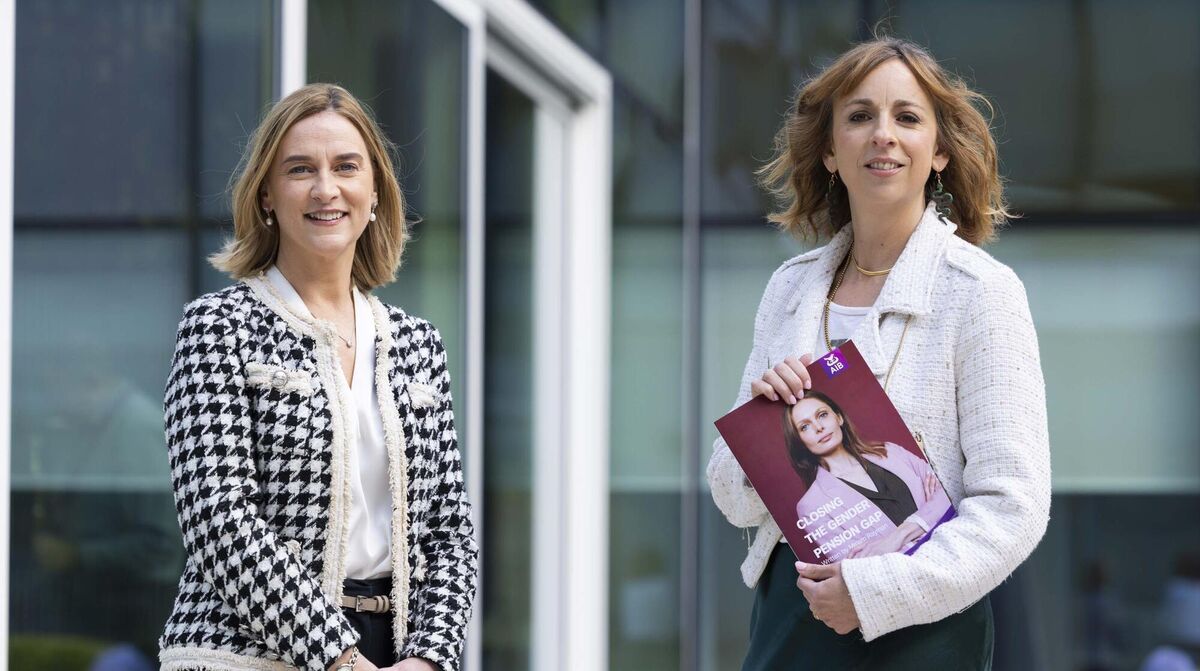Why auto-enrolment can be a double-edged sword for women's pensions

'Auto-enrolment is going to be so useful as a national initiative, but it is not going to close the gap. Proactive engagement is going to be key.'
Ireland’s gender pay gap is a well-documented phenomenon. The Central Statistics Office’s (CSO) latest report from 2022 put the gap at 9.6%, with mean earnings for males totalling €27.73 with 35.7 mean paid weekly hours, while mean earnings for females were €25.06 with 30.1 mean paid weekly hours.
At the extreme end of the spectrum, sectors such as finance, insurance, and real estate saw the gap widen to almost 25%, according to CSO figures, with education on the other end seeing a more modest gap of 2.7%.
Earlier this year, however, PwC measured the gap to be even larger than the CSO average, putting it at 11.2% after analysing more than 550 Irish companies that submitted gender pay gap reports in 2023.
Women on average make less due to a combination of earning less and the cost of motherhood, with less recorded service due to their increased likelihood of taking a career break or working part-time.
Subsequently, women are less likely to make additional contributions to their pensions as they have less disposable income. If they do have extra cash, women are more likely to divert it elsewhere, meaning they ultimately have less going into their pension pots than men.
This has led to a major gender pension gap, with a woman retiring today having a retirement income 31% less than her male counterpart.
These figures, released this week by the Future Laboratory and AIB, have far-reaching ramifications, with estimates that it could take another 25 years to close the substantial gap.
Things are changing, however, with a series of policy and societal shifts coming down the line, the most significant of which is the planned introduction of auto pension enrolment, which according to the Future Laboratory report, will not only bump up female participation, but will also raise awareness of the importance of planning for retirement.
Despite its anticipated benefits, auto-enrolment has been widely viewed as a double-edged sword, with concerns that its properties could both help and hinder women in the workforce.
“It’s going to be a catalyst to start the conversation,” says Ciara Ryan, head of wealth and insurance at AIB.
“That’s why auto-enrolment is going to be so useful as a national initiative, but it is not going to close the gap — proactive engagement is going to be key.”

In 2022, Insurance Ireland, the representative body for Irish insurance firms, warned that despite added age and income provisions, the auto-enrolment system will disproportionately disadvantage low-income, part-time workers, a vast amount of whom are women and young employees.
In the 2022 report, the representative body said it was “disappointed” at the fact that the general scheme had not gone further in ensuring fair treatment of carers and part-time and low-income earners, who are predominantly women, adding that they “do not make any provision to mitigate the gender pension gap".
In addition, Insurance Ireland said the general scheme clarified that ‘top-up payments’ cannot be made to the auto-enrolment pension, thereby prohibiting employees from maximising their retirement fund, under existing proposals.
Currently, those eligible for the upcoming auto-enrolment scheme are people who do not have a pension scheme, earn more than €20,000 per year, and are aged between 23 and 60.
In their 2020 report, ‘Women and Retirement in a Post Covid-19 World,’ Dr M Claire Dale and Professor Susan St John warned that the current age band “does not reflect” a gender lens, with the proposed threshold income of €20,000 “extraordinarily high" compared to other countries.
“For women whose income is variable, it is likely to be very complicated,” said the authors.
“In contrast, there is no effective threshold for New Zealand’s AE scheme, and the threshold for Australia is much lower at an annual A$5,400 [€3,348]."

Echoing these concerns, the Irish Pensions Council in its 2022 report also found that the current auto-enrolment scheme was not gender-proof, noting that supports in their current form “are not particularly effective at helping women to save for retirement".
“This could be due to many reasons, including a lack of proactive support, lack of awareness or understanding, lack of flexibility, different priorities for men and women, perceived poor value for money, or other reasons such as inertia, affordability [actual or perceived] and the inability to access to retirement savings until later in life,” the report said.
“The AE Scheme is not gender-proof,” it noted, adding that it will not, in its proposed format, automatically include those earning less than €20,000, which includes a greater proportion of women than men.
Increased awareness of the gender pension gap will help drive women to seek good financial advice to provide them with guidance on what they can do to close the gap, the AIB and Future Laboratory report says.
Elaborating on these supports, the report notes the need for innovative company benefits to assist women, including pension credits, additional top-up directives after career breaks, and options of a benefits menu, whereby employees can choose to scrap one benefit such as free gym membership for increased pension contributions.
In addition, the report notes that the issue does not require a one-size-fits-all approach, adding that to unearth each individual’s set of needs, managers need “to be coached to ask the right questions and gather feedback from the team".
“Only then can they co-create strategies to overcome barriers on an individual basis with their staff.
“This can’t just be left to the individual,” the AIB and Future Laboratory report states.
“While the closure of the gender pension gap is within reach, it still requires co-ordinated interventions across departments, organisations, policymakers, and financial institutions too.”














